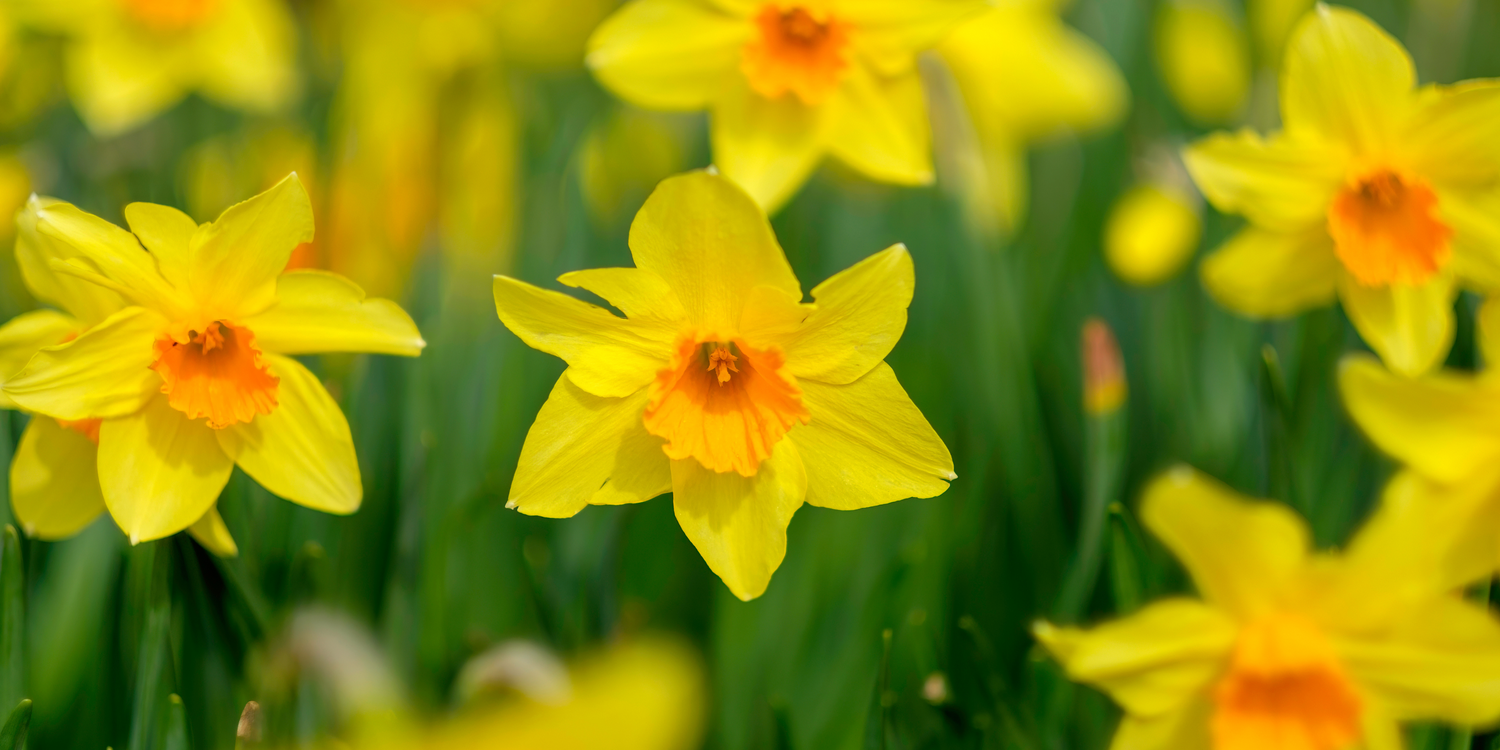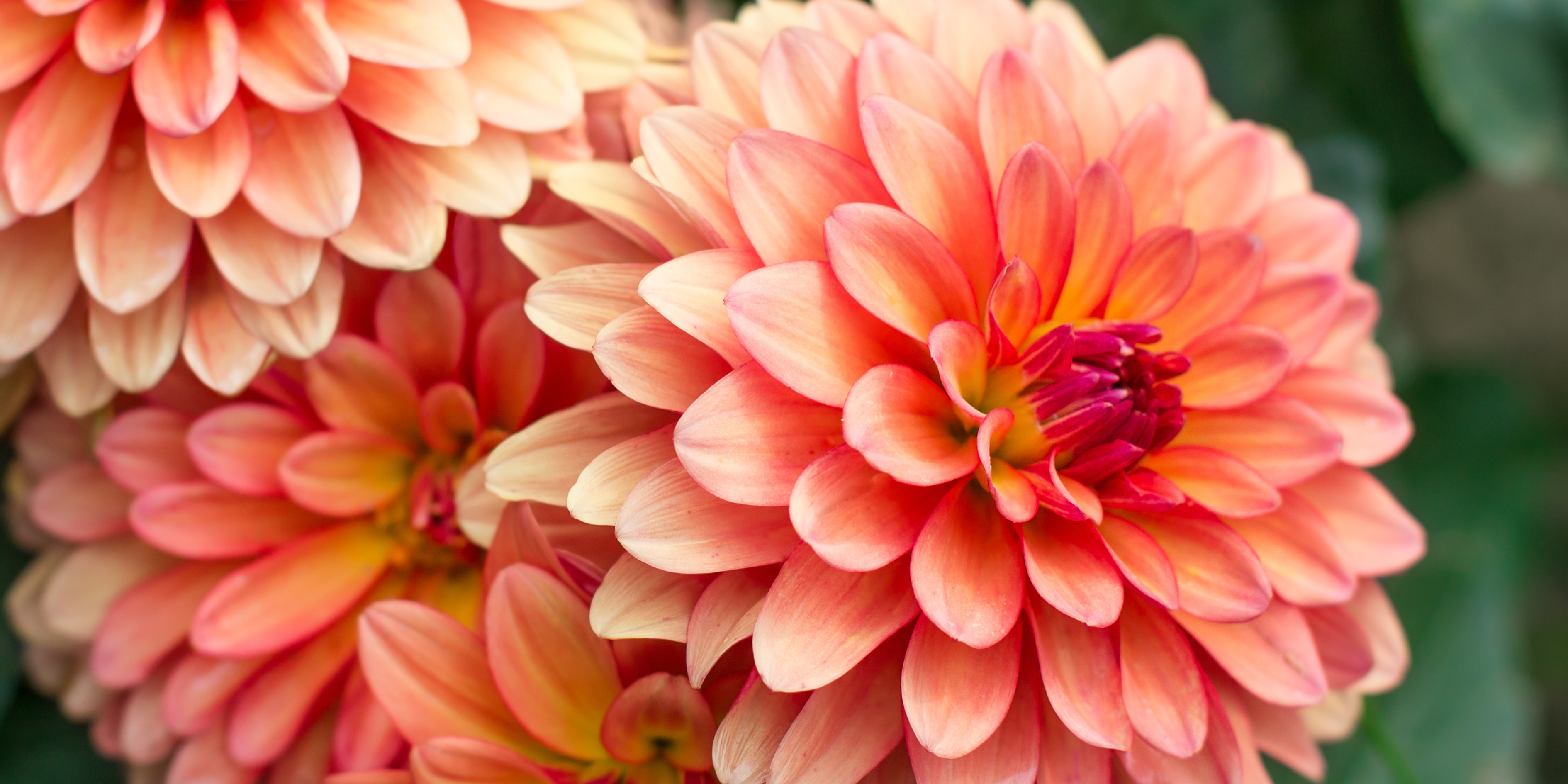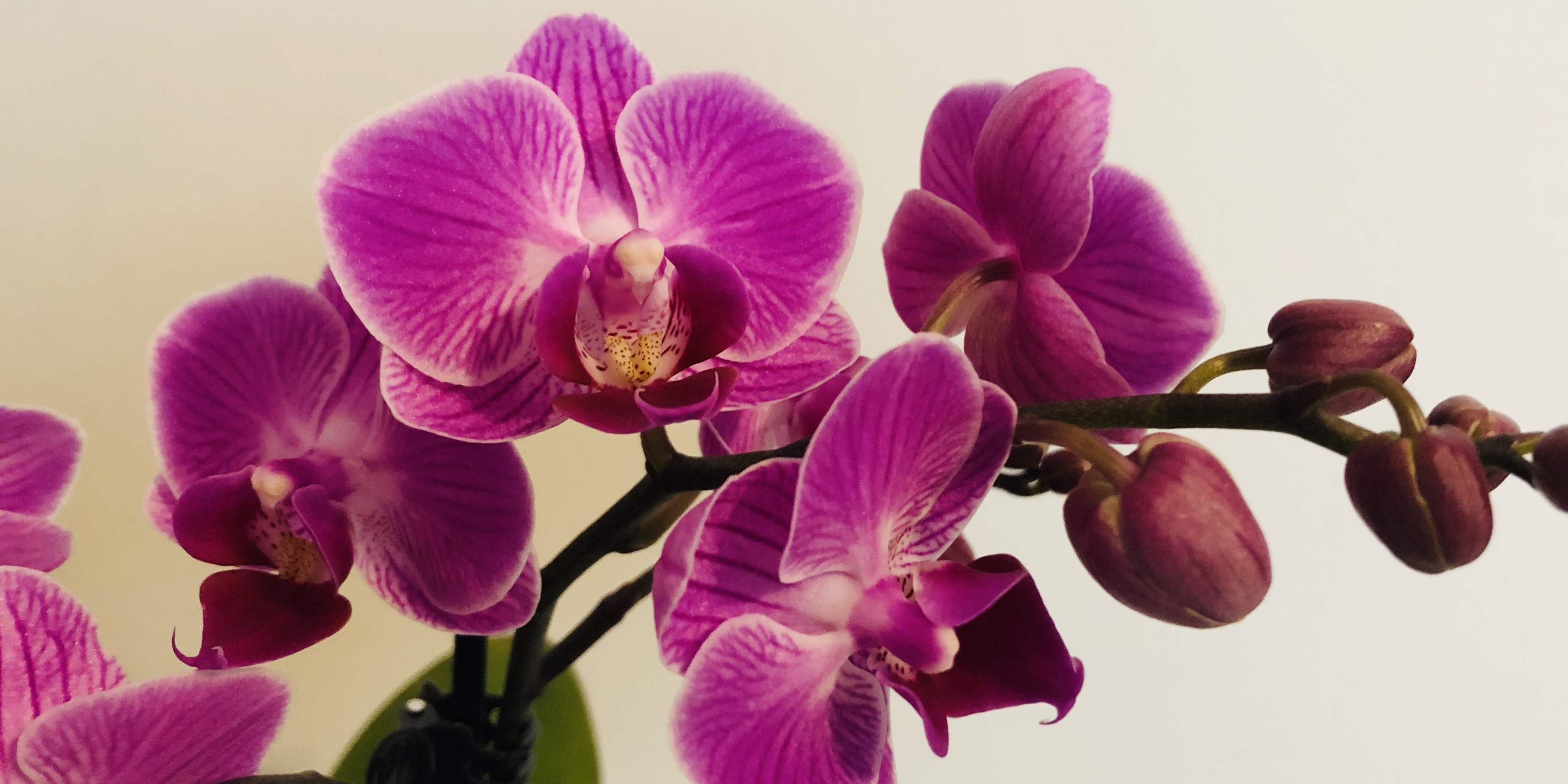And dances with the daffodils.”
Daffodils are one of the happiest flowers around. Though they’re from a small family and don’t come in as many colours as certain other flowers, they’re a remarkable and interesting bloom all in their own right.
The meaning of daffodils is tied to when they grow. Read on to learn more about daffodil symbolism, as well as the flower’s history and how to care for daffodils once they’ve been cut.
Daffodil meaning & symbolism

The daffodil symbolises rebirth and new beginnings. It’s one of the first flowers to bloom at the end of winter, announcing the beginning of spring and signifying the end of the cold, dark days.
Less commonly, daffodils may also symbols of creativity, energy, resilience, forgiveness and vitality. Interestingly, daffodils are one of few flowers not to have different meanings depending on the colour.
In China, daffodils are symbols of good fortune and prosperity. In Japan, they symbolise joy and mirth. In France, daffodils are symbols of hope while in the Middle East, they were believed to be aphrodisiacs.
Daffodils are the birth flower of March (which makes sense in the Northern Hemisphere, being the first month of spring, but less sense in the Southern Hemisphere) and the traditional flower of a 10th wedding anniversary.
The daffodil is also the national flower of Wales, and the symbol of a number of cancer-related charities around the globe, including the Cancer Council in Australia. The 25th of August is Daffodil Day, an annual campaign run by the Cancer Council to raise money for cancer research.
Daffodil flower meanings by colour
Daffodils are usually bright yellow or all white, but may also be white or yellow with a contrasting pink, orange or yellow corona (the middle part of the flower).
Unlike roses, tulips and other blooms, daffodils don’t tend to carry different meanings based on their colour. In general, yellow flowers are symbols of joy and white flowers are symbols of purity and innocence. These meanings may be applied to yellow and white daffodils, too.
Daffodil history & insights

Daffodils were originally native to parts of south and western Europe, such as Spain, Portugal, Wales and England, and northern parts of Africa, like Morocco. Today, they grow around the world in places such as the United States and Australia, and in a variety of climates and conditions.
The daffodil is easily recognised thanks to its unique, trumpet-shaped corona. You might think this part of the flower would be quite soft like the petals, but it’s actually quite firm and springy.
In the UK, daffodils are sometimes called “Lent lilies”, because they tend to bloom between Ash Wednesday and Easter. Although the Amaryllidaceae family (which houses daffodils) was once combined with the Liliaceae family (which houses lilies), daffodils are not actually a type of lily. They don’t belong to the Lilium genus, but rather the Narcissus genus.
Are daffodils and narcissus the same?
There’s some confusion about whether narcissus and the daffodil are the same flowers; the names are often used interchangeably.
Technically speaking, yes—daffodils and narcissi are the same. “Daffodil” is the common name given to all flowers in the genus Narcissus.
The Latin name of the common wild yellow daffodil is Narcissus pseudonarcissus. Other well-known flowers in this genus include jonquils (Narcissus jonquilla), which are usually the cut flowers you’ll find at a florist, and paperwhites (Narcissus papyraceus). Both of these may also be called daffodils.
Daffodil name meaning
Just where the daffodil got its name is unclear. The name is possibly derived from the Old English word “affodyle”, which means “that which comes early” or “early comer”. This makes sense, given the way the flower usually blooms early, ahead of spring.
It may also be a variation of the Latin word affodilus or asphodelus, which is another type of flowering plant native to temperate parts of Europe.
Narcissus name meaning
Slightly more is known about where the name “narcissus” comes from. There’s a Greek myth that the hunter, Narcissus, was lured to a stream and drowned when he fell in love with his own reflection. As daffodils often grow on the banks of rivers and streams, it’s said that they grow from the place where he died.
The name may also come from the Greek word “narkao”, which means “to be numb” or “I grow numb”. This is also the origin of the word “narcotic”. This may stem from the plant’s toxicity.
Are daffodils poisonous?
All parts of the daffodil are toxic to humans, dogs, cats and horses. The plant contains a chemical called lycorine, which can induce severe gastrointestinal symptoms if consumed.
The most toxic part of the plant is the bulb, which is problematic as people sometimes mistake it for an onion bulb.
The plant also contains microscopic, needle-shaped crystals of calcium oxalate, which are known to irritate the skin, nose and throat. Sometimes, simply touching or even sniffing daffodils can cause a skin rash, known as daffodil pickers’ rash, as well as pain and burning in the mouth, nose and throat.
Despite all this, daffodils were once used in traditional medicine to induce vomiting, cause numbness and more.
Interestingly, daffodils also contain an alkaloid chemical called galantamine, which is known to slow the progression of Alzheimer’s disease. While the compound can be synthesised nowadays, daffodils are still grown and harvested for this chemical and used in the treatment of Alzheimer’s.
Do daffodils smell?
Most daffodils produce a fragrance that some find enjoyable, others detest and others still will miss entirely. The smell of jonquils, however, can be particularly overwhelming and even unpleasant.
How to care for cut daffodils

Daffodils make a lovely, bright addition to a bouquet and can be just as beautiful in a bunch on their own. They typically last about a week in a vase with water.
If you’re lucky enough to have been given a bouquet containing daffodils, there’s one key thing you absolutely must know: daffodils “poison” other cut flowers. Roses and tulips are particularly sensitive.
When daffodil stems are cut, they release a kind of sap that blocks the uptake of water by other flowers, causing them to wilt faster. It also releases sugars that hasten mould and bacterial growth.
To avoid this, all you have to do is soak your cut daffodil stems in clean water for at least six hours before mixing them with other stems. This will neutralise the sap.
While it’s often recommended to regularly trim the stems of your fresh-cut flowers. This is not the case for daffodils, as more sap will be released and you’ll have to soak them separately for another six hours.
When to give someone daffodils

As mentioned, daffodils are the birth flower of March, meaning they’re the perfect flower to give someone who celebrates a March birthday.
They’re also perfect for giving to your partner or to someone you know who’s celebrating a 10th wedding anniversary, being that they’re the traditional flower associated with this milestone.
Outside of this, daffodils are perfect for giving to someone as a birthday bouquet (even if they’re not born in March), as well as for saying congratulations, wishing someone a speedy recovery and simply cheering somebody up. With their happy, joyful appearance, these blooms are guaranteed to put a smile on your loved one’s face.
If you love daffodils, you’ll love our Daphne Posy (pictured above)—a cheerful bunch starring daffodils as the focal flower! With its mix of brightly coloured blooms, The Daphne is guaranteed to delight anyone who receives it.
In Australia, daffodils bloom from approximately late August into September and possibly October, so there's a limited window in which to actually buy them.
And if you want to learn more fascinating facts about flowers, check out other articles in our Flower Insights series, including one on orchids, one on gladioli and one on lotuses.
Or you can explore our Flower Delivery Melbourne, Flower Delivery Sydney and Flower Delivery Perth collections to see what flowers we can deliver to your loved ones in these locations.



